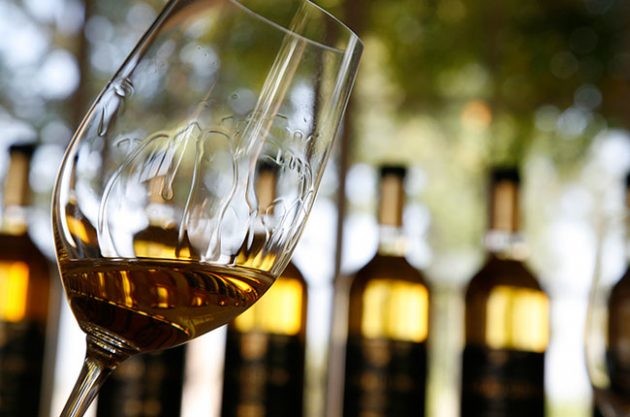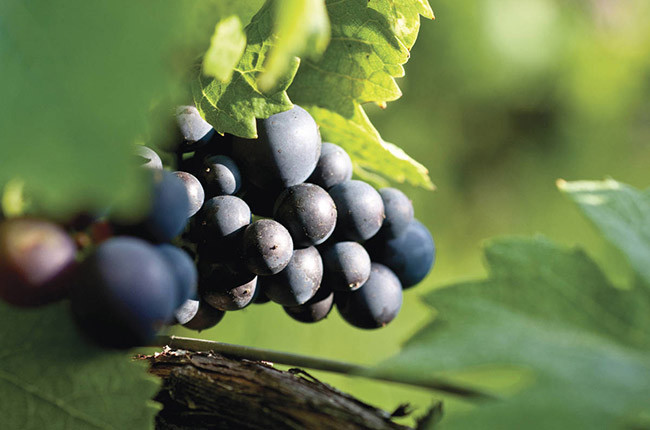As Port, historically in the UK at least, is consumed plentifully over Christmas, it probably would have made sense to write this over the festive period. Since a ‘Vin doux Naturel’ (VdN), is also a big seller at Yuletide, it seems even weirder to be writing this in January. But never mind.

Though I don’t drink it much, even at Christmas, Port is something I’m used to because there’s always been a bottle living in our drinks cabinet. Consequently, I mistakenly always associated it with spirits rather than wine. A heinous, vinous faux pas.
Each topic I’ve written about from my WSET Level 2 Award in Wines andSpirits course has revealed its own quirks and idiosyncrasies, and Port is no exception. The fact that the tradition of treading the grapes by foot to extract colour and tannin is still practised in many premium Port houses, is my personal favourite. It feels rustic, haphazard even, sitting nicely in contrast with the slick processes of the wine business. The suggestion that producers ‘jump up and down on the grapes,’ amuses and delights me.
Port production
Port is a fortified wine, meaning alcohol is added to it during its production. All fortified wines, tutor Erica informs us, have ‘neutral grape spirit’ (brandy, effectively) as their fortifier because ‘wines have to be made from grapes.’
As fortification occurs during the fermentation process, Port is always sweet. The added alcohol kills off the yeast fermenting the grapes which halts fermentation leaving residual sugar, and hey presto: sweet wine. Specifically, you’re left with partially fermented, high alcohol, sweet wine. Erica tells us it’s around 20-22 per cent.
Vins doux Naturels employ similar methods to Port for making them sweet. As we covered sweet wines before we did fortifieds, I had inadvertently been given an insight into Port’s production before, not that I remembered it all…
Port styles
But back to Port. After the halted fermentation, it’s ‘all about ageing’. Wines are aged in oak barrels and the length of time they spend in them determines the style.
Ruby and Reserve Ruby Ports are young, ruby coloured and taste of fresh fruit – ‘cherry and berry’ so goes Erica’s handy rhyme. Reserve Rubies, have been aged a little longer in oak, have better quality grapes, and more complexity and intensity. They’re both however, non-vintage wines, and with both: ‘once you’ve opened it, drink it’ Erica warns.
Late Bottled Vintage, similar in style to Reserve Ruby, is where the quality jumps up. The wine comes from one year and tends to be of very good quality. Their extra spicy flavours are a result of prolonged oak ageing.
Vintage Port is the top Ruby style, and is only made when a ‘Port house thinks it’s got some particularly outstanding grapes’ from a specific vintage. Wines are bottled very young but are so tannic they’re nowhere near ready to drink. They will be aged for decades, upwards of fifty years in some cases. Apparently, our peers on the WSET Level 3 Course were sampling a 40-year-old Port at the time of our lesson, and ‘still [had] time to keep going.’ It seems inconceivable a wine can age four decades and retain the original fruitiness of the grapes. Ruby Ports, aiming to maintain the fresh fruit, are aged in big steel containers, thereby not altering the flavour.
Tawny Ports on the other hand, take their name from the colour they reach through acute oak ageing.
‘[Producers] oxidise it heavily,’ says Erica. ‘It’s not just [about] leaving it; it’s about aerating the wine – moving it from cask to cask.’
‘You want to get rid of that ruby colour, take it to garnet so it ends up tawny. That oxidative effect will change the colour and give us dried fruit, nuts, spice flavours.’
Vin doux Naturels
The Vin doux Naturels we learnt about didn’t really age. For them it’s about perfume, fresh peach and grape flavours. The one we tried in the lesson was the Muscat de Beaumes de Venise. Jim, our teacher for that lesson, tells us ‘the yeast has only eaten half of the sugar,’ and in the same way Port is made, ‘almost pure alcohol’ is used to kill it off. It is the reason Beaumes de Venise comes with a ‘big burning character.’
So what is the final product? In the Muscat wine, we end up with high alcohol, grape juice and Muscat grape aromas. Jim’s succinct conclusion is irreverent and apt:
‘It’s almost like a cocktail we’ve got here: a little bit of wine, a lot of grape juice, and some un-aged brandy. Because that’s what most of it is: grape juice, sugar, alcohol.’
If only tasting were that simple…
All rights reserved by Future plc. No part of this publication may be reproduced, distributed or transmitted in any form or by any means without the prior written permission of Decanter.
Only Official Media Partners (see About us) of DecanterChina.com may republish part of the content from the site without prior permission under strict Terms & Conditions. Contact china@decanter.com to learn about how to become an Official Media Partner of DecanterChina.com.











Comments
Submit